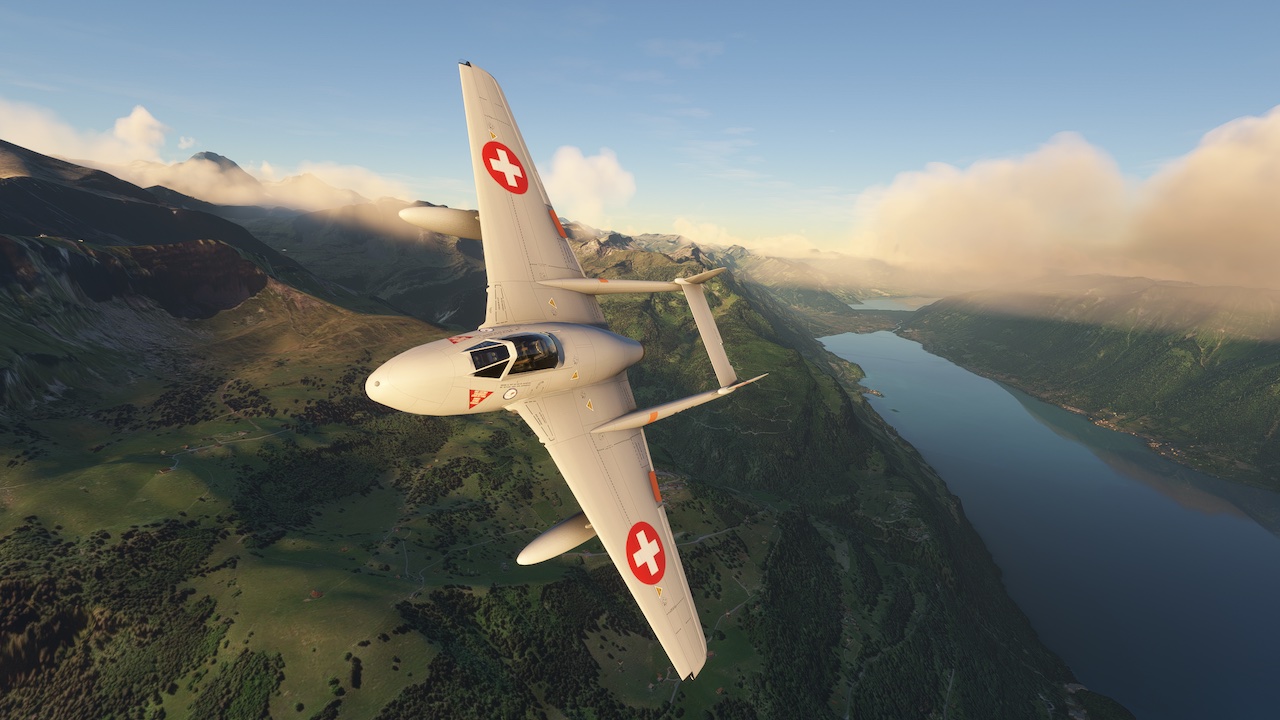The de Havilland Vampire, also known as the DH.100, was the second military jet to be built in the United Kingdom by the de Havilland company. It entered service just after the Second World War and has the unique feature of being equipped with a twin-beam rear fuselage. It was the first jet aircraft to cross the Atlantic Ocean, and the first jet aircraft capable of operating from an aircraft carrier. More than 4,500 were built, some under licence, and used by about 25 different countries. Switzerland tested it in 1946, followed by an order for 75 aircraft in 1949 and the manufacture under licence of 100 aircraft. Originally acquired as a fighter, it was used until 1970 as a fighter and ground attack aircraft. It was then used as a training aircraft and target aircraft for the anti-aircraft warfare. The last military flights took place at the end of 1990, many of them were sold at auction and some still fly in various countries.
The Vampire DH-100 underwent two major upgrades: the first in 1960 with the installation of an ejection seat and modernized instrumentation (artificial horizon and gyrocompass). The second in 1980 with the addition of UHF radio equipment and a transponder (IFF), which necessitated the lengthening of the nose, which became pointed like that of the DH-112 Venom of the time. The 1960s also saw the start of blind flight (IFR) for the Swiss Air Force. The existing direction-finding stations were supplemented by approach radar installations (GCA) and a very original omnidirectional talking radio system (NAFU). We intend to reproduce the operation of this system and thus provide our Vampires with blind flight and landing capabilities in a future update that we hope will also allow the engagement of the armament as realized in the P3D version.

